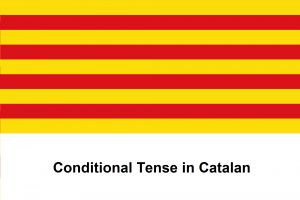Difference between revisions of "Language/Catalan/Grammar/Conditional-Mood"
m (Quick edit) |
|||
| Line 72: | Line 72: | ||
<br><hr>If you have any questions, please ask them in the comments section below.<br>Feel free to edit this wiki page if you think it can be improved. 😎 | <br><hr>If you have any questions, please ask them in the comments section below.<br>Feel free to edit this wiki page if you think it can be improved. 😎 | ||
==Related Lessons== | |||
* [[Language/Catalan/Grammar/Nouns|Nouns]] | |||
* [[Language/Catalan/Grammar/Ablative-Case-in-Catalan|Ablative Case in Catalan]] | |||
* [[Language/Catalan/Grammar/Plurals|Plurals]] | |||
* [[Language/Catalan/Grammar/Gender|Gender]] | |||
* [[Language/Catalan/Grammar/Interrogative-Words-in-Catalan|Interrogative Words in Catalan]] | |||
* [[Language/Catalan/Grammar/Accusative-Case-in-Catalan|Accusative Case in Catalan]] | |||
* [[Language/Catalan/Grammar/Inclusive-Case-in-Catalan|Inclusive Case in Catalan]] | |||
* [[Language/Catalan/Grammar/Present-Continuous-in-Catalan|Present Continuous in Catalan]] | |||
* [[Language/Catalan/Grammar/Adjectives|Adjectives]] | |||
* [[Language/Catalan/Grammar/Genitive-Case-in-Catalan|Genitive Case in Catalan]] | |||
Revision as of 16:33, 26 February 2023
Hi Catalan learners! 😊
In today's lesson, we will be discussing the conditional mood in Catalan.
Introduction
The conditional mood is a grammatical mood that is used to describe events or actions that are not necessarily true, but that would happen under certain conditions. In Catalan, the conditional mood is used to express hypothetical situations, possibilities, and wishes. By understanding the conditional mood, you can communicate more effectively in Catalan and express your thoughts and ideas more precisely.
Formation of the Conditional Mood
The conditional mood is formed in Catalan by adding the appropriate endings to the infinitive of the verb. Here are the endings for the conditional mood:
- "-ia" for verbs ending in "-ar"
- "-ia" for verbs ending in "-er" or "-re"
- "-iria" for verbs ending in "-ir"
Here are some examples of how to form the conditional mood in Catalan:
- "cantar" (to sing) -> "cantaria" (would sing)
- "llegir" (to read) -> "llegiria" (would read)
- "vendre" (to sell) -> "vendria" (would sell)
Uses of the Conditional Mood
The conditional mood in Catalan is used in a variety of ways to express hypothetical situations, possibilities, and wishes. Here are some of the most common uses of the conditional mood:
- Expressing hypothetical situations: "Si tingués temps, aniria a la platja." (If I had time, I would go to the beach.)
- Expressing wishes: "M'agradaria viatjar per tot el món." (I would like to travel around the world.)
- Expressing possibilities: "Potser ho faria si tingués més informació." (Maybe I would do it if I had more information.)
Irregular Verbs in the Conditional Mood
Like in many languages, there are some irregular verbs in the conditional mood in Catalan that don't follow the regular pattern of adding "-ia" or "-iria" to the infinitive. Here are some of the most common irregular verbs in the conditional mood and their forms:
- "haver" (to have) -> "hauria" (would have)
- "poder" (to be able to) -> "podria" (would be able to)
- "saber" (to know) -> "sabria" (would know)
- "voler" (to want) -> "voldria" (would want)
Examples
| CATALAN | ENGLISH |
|---|---|
| SI JO TINGUÉS DINERS, JO COMPRARIA | IF I HAD MONEY, I WOULD BUY |
| SI VOSTÈ TINGUÉS DINERS, VOSTÈ COMPRARIA | IF YOU HAD MONEY, YOU WOULD BUY |
| SI ELL TINGUÉS UN COTXE, ELL ANIRIA AMB VOSTÈ | IF HE HAD A CAR, HE WOULD GO WITH YOU |
| SI NOSALTRES TINGUÉSSIM DINERS, NOSALTRES VIATJARÍEM | IF WE HAD MONEY, WE WOULD TRAVEL |
| SI VOSALTRES TINGUÉSSIU EL BITTLET, VOSALTRES ANARÍEU | IF YOU (PLUR) HAD THE TICKET, YOU (PLUR) WOULD GO |
| SI ELLS TINGUESSIN TEMPS, ELLS LLEGIRIEN ELS LLIBRES | IF THEY HAD TIME, THEY WOULD READ THE BOOKS |
Conclusion
The conditional mood is an important part of Catalan grammar that is used to express hypothetical situations, possibilities, and wishes. By understanding the formation of the conditional mood and its uses, you can communicate more effectively in Catalan and express your thoughts and ideas more precisely.
If you have any questions, please ask them in the comments section below.
Feel free to edit this wiki page if you think it can be improved. 😎
